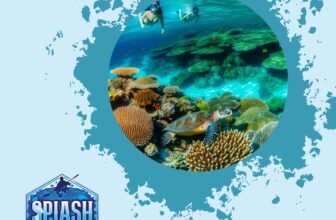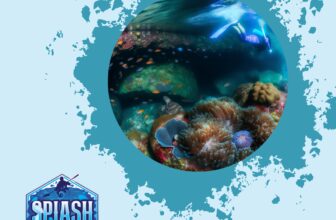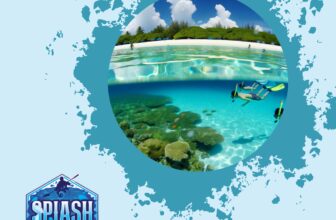
Understanding the ocean sediment ecosystem is pivotal for anyone interested in the ocean's many mysteries and the diverse life it sustains. Whether you're taking your first dive, or you're just someone curious about the secret lives under the waves, this guide provides a clear insight into why seafloor habitats are so important.
Introduction
So, what exactly is an ocean sediment ecosystem? Simply put, it's the collective environment found on the ocean floor made up of sediments, which are particles that accumulate over time. This includes everything from sand, silt, and clay to remnants of marine life. These sediments are not just lifeless debris; they form intricate habitats essential for countless marine organisms.
Seafloor habitats are incredibly important for a few reasons. First, they're home to a vast array of species, many of which you won't find anywhere else. From tiny microbes to burrowing worms and larger sea creatures, the diversity in these habitats is remarkable. Second, these ecosystems play a crucial role in maintaining the health of our oceans. They help in nutrient cycling, acting like nature's filtration system, which keeps the water clean and fosters healthy marine life.
For beginner divers and ocean enthusiasts, understanding these ecosystems is like unlocking a secret world beneath the waves. Each dive can bring you face-to-face with these hidden communities, offering a glimpse into the complex and delicate balance that keeps our oceans thriving. Dive in, explore, and you'll see that ocean sediments are far more than just the ocean floor—they're the foundation of marine life itself.
The Role of Ocean Sediments in Seafloor Ecosystems
Ocean sediments are not just bits and pieces of sand and organic debris lying at the bottom of the ocean; they are the foundation of marine ecosystems. Marine sediments form from a blend of eroded rock particles, decomposed plants, and remains of dead marine organisms. These particles accumulate over thousands of years, creating layers that can tell us a lot about the earth’s history.
Different Types of Sediments
You'll commonly hear about three main types of marine sediments:
- Terrigenous Sediments: Come from land, carried by rivers or blown by the wind, and end up settled in the ocean.
- Biogenous Sediments: The skeletal remains of marine organisms like plankton.
- Hydrogenous Sediments: Form from chemical reactions in seawater.
Importance in Sustaining Marine Life
Why should you, a budding diver, care about ocean sediments? These sediments create complex habitats where many marine creatures reside. From tiny bacteria to burrowing worms and larger predators, ocean sediments support a wide range of life.
Each grain of sediment provides a niche for different organisms, forming a dynamic and interconnected community beneath the waves.
Nutrient Cycling
Healthy sediments play a crucial role in the nutrient cycle, acting as both a source and sink for nutrients. When marine life dies, they're broken down by bacteria within these sediments, releasing nutrients back into the water column where they can be used again by living organisms. This nutrient cycling is essential for sustaining the ocean’s productivity.
Dive Deeper: Resources for Exploring Marine Ecosystems
For more on unique ecosystems you might explore while diving, you could check out our internal resources:
- Diving and Marine Lakes: Unique Ecosystems and Conservation Challenges
- Cnidarians: Diversity, Ecology, and Conservation Status
- Scuba Diving Introduction
So next time you're taking a dive, remember: beneath your flippers lies a world of life and complexity, built on the humble ocean sediment.
Habitat Diversity in Marine Sediments
When we talk about habitat diversity in marine sediments, we're referring to the variety of living conditions available within the seafloor's micro-environments. This might sound complex, but it's all about how diverse tiny habitats are formed right under our fins.
Microhabitats Within Sediments
The seafloor isn't just a flat, monotonous expanse. It's full of microhabitats—small, distinct environments that offer unique conditions for marine life. Picture the sediment layers as a three-dimensional puzzle, where different grain sizes, organic content, and chemical gradients create countless niches. Consider the variety of living spaces:
- Sand: Tiny gaps between grains
- Silt: More stable, oxygen-rich zones closer to the surface
- Clay and Gravel: Unique environmental niches due to varying grain sizes
Types of Organisms Living in These Habitats
These microhabitats are home to a vast array of organisms, ranging from microscopic to larger invertebrates. The occupants of these niche environments include:
- Microscopic bacteria and fungi
- Invertebrates like worms, crustaceans, and mollusks
- Tiny fish and juvenile stages of larger species
Each organism plays a crucial role:
- Bacteria: Decompose organic matter
- Worms and crustaceans: Churn through sediments, impacting water filtration and nutrient cycling
Examples of Species Reliant on Seafloor Sediments
Certain species are particularly dependent on sediment-based habitats:
- Tube-Dwelling Polychaete Worms: Create tunnels that stabilize sediment and create new habitats
- Crabs and Burrowing Shrimp: Form complex burrow systems in muddy bottoms, providing shelter and influencing sediment structure
- Bivalves like Clams and Oysters: Filter water as they feed, contributing to cleaner water and healthier sediment conditions
Dynamics of Habitat Diversity and Species Interactions
The interactions within these sediment layers are dynamic and multifaceted:
- Competition and Collaboration: Species vie for space, food, and mates but also sustain the ecosystem through symbiotic relationships
- Bacteria: Break down organic material into simpler compounds usable by other organisms
- Burrowing Activities: By worms and crabs aerate the seabed, allowing oxygen to penetrate deeper layers, benefiting a range of other life forms
Understanding this diversity helps beginner divers and enthusiasts appreciate the unseen world beneath their fins. Every dive provides a snapshot of these complex interactions, offering a glimpse into the critical roles played by even the smallest sediment-dwellers.
Key Takeaway
Next time you're out there, take a moment to consider the bustling, intricate ecosystems beneath the surface—every grain of sand plays a part in the ocean's grand puzzle.
Ocean Health and the Significance of Marine Sediments
If you think marine sediments are just underwater dirt, think again. These sediments are vital to the health of our ocean.
Importance of Marine Sediments
Marine sediments play a crucial role in:
- Nutrient Cycling:
- Ocean sediments act like a massive storage unit for nutrients.
- They slowly release nutrients, keeping underwater ecosystems vibrant and balanced.
Water Filtration and Purity
Think of marine sediments as nature’s Brita filter. They contribute to:
- Pollutant Trapping:
- Sediments trap pollutants, ensuring the water remains suitable for diverse life forms.
- Chemical Stability:
- They help maintain the chemical balance of the ocean, supporting everything from tiny plankton to large whales.
Impact on Marine Ecosystems
Healthy seafloor ecosystems directly affect global marine health:
- Fish Populations Thrive: When sediments do their job well, fish populations flourish.
- Coral Reefs Flourish: The entire coral reef system benefits from healthy sediments.
- Marine Food Web Boost: The health of the sediment ecosystem directly influences the marine food web.
It's all interconnected. The healthier the sediment ecosystem, the better it is for the ocean overall.
For a deeper dive into this topic, check out our extended reading on Scuba Diving.
Threats to the Ocean Sediment Ecosystem
While the seafloor teems with life, it’s not all smooth sailing for these underwater communities. Human activities and natural events are posing significant threats to marine sediments, impacting their ability to sustain the rich biodiversity we cherish.
Pollution, for one, is a major disruptor. Chemicals from industrial waste, plastic debris, and oil spills can seep into the sediments, altering the delicate balance of these habitats. Runoff from agricultural activities introduces excessive nutrients and pollutants, often leading to dead zones where the oxygen levels plummet, stifling the lifeforms that rely on these environments.
Climate change and ocean acidification are also glaring concerns. As the planet warms, ocean temperatures rise, making it harder for many species to survive. Acidification, driven by increased CO2 absorption, wreaks havoc on calcium carbonate structures essential for various organisms. Coral reefs, already stressed by temperature fluctuations, face further degradation, leading to a ripple effect that impacts sediment-dwelling creatures.
Physical disturbances, like trawling and seabed mining, act like underwater bulldozers. Trawling involves dragging heavy nets across the sea floor, disrupting and often destroying habitats. Mining disturbs vast areas, making it difficult for life to recolonize. These activities not only displace organisms but also resuspend sediments, which can smother life forms and clog the feeding and breathing mechanisms of various species.
All these threats together compromise habitat diversity and disrupt the intricate web of life in marine sediments. It’s critical for us, as divers and ocean enthusiasts, to be aware of these issues. The health of our oceans and the ability to continue exploring and enjoying them hinges on defending these vital sediment ecosystems from further harm.
Conservation Efforts for Ocean Sediments
Protecting ocean sediments isn't just about saving the sands underneath the waves—it’s about preserving the lifeblood of marine ecosystems. Various ongoing conservation efforts are making strides in protecting marine sediments, but there’s always more to do. Here's how experts and beginners alike can get involved.
Global and Local Conservation Initiatives
Organizations around the world are spearheading efforts to safeguard these critical habitats. Global initiatives like the United Nations Sustainable Development Goal 14 (Life Below Water) set ambitious targets for reducing marine pollution and conserving coastal and marine areas. Locally, marine protected areas (MPAs) are being established to create safe havens where human activities are strictly regulated to prevent damage to seafloor habitats.
The Role of Marine Protected Areas (MPAs)
MPAs act as underwater sanctuaries. By restricting activities like fishing, drilling, and certain types of tourism, these areas help maintain the health and diversity of marine sediments. Divers can support these efforts by respecting the rules and guidelines set out in these regions, ensuring minimal disturbance to these fragile ecosystems.
Personal Contributions: How You Can Help
You don't need to be a marine biologist to make a difference. Simple steps can have a substantial impact. Here's what you can do:
-
Dive Responsibly: When diving, be mindful of your buoyancy to avoid disturbing the seafloor. Even a small kick can dislodge sediments and harm the microorganisms living there.
-
Reduce Plastic Use: Plastics often end up in oceans, breaking down into microplastics that settle into sediments, wreaking havoc on marine life. Cutting down on plastic use helps reduce this threat.
-
Support Sustainable Seafood: Overfishing and poor fishing practices can devastate seafloor habitats. Choose seafood sourced from sustainable practices to lessen the impact on marine ecosystems.
- Participate in Beach Cleanups: Removing trash from beaches before it gets washed into the sea can help maintain healthier near-shore sediments.
Advocacy and Education
Spread the word. Educate friends and family about the importance of seafloor habitats and promote responsible ocean practices on social media. Your voice can amplify the message and encourage more people to take action.
Supporting Scientific Research
Many conservation efforts are guided by scientific research. Support can come in the form of donations to research organizations, participating in citizen science projects, or even engaging with local universities and institutions conducting marine studies.
Conclusion
Conservation is a collective effort, blending global strategies with local actions. Whether you're diving in pristine waters or advocating from your hometown, every effort counts. By understanding the importance of marine sediments and adopting responsible practices, we can help maintain these vital ecosystems for future generations. Remember, every ripple of action contributes to the ocean’s health, making it possible for marine life to flourish both today and tomorrow.
Conclusion
Understanding and protecting the ocean sediment ecosystem is more than just a dive into the unknown—it’s about preserving a world of life forms that support the diversity and health of our oceans. These sediments aren't just mud or sand; they are the foundation of countless marine habitats. Maintaining their integrity is crucial for sustaining an ecosystem that benefits our planet in numerous ways, from nutrient cycling to water filtration.
Continuous conservation efforts are essential. These habitats face threats ranging from pollution to climate change and need our collective commitment to safeguard them. Whether you’re an avid diver or someone just beginning their journey into the ocean's depths, every bit of awareness and action can help secure a healthier future for our seas.
Explore more about marine sediments, get involved in conservation, and help protect the incredible underwater ecosystems. Diving deeper into this subject makes us think differently about the impact we have and drives the enthusiasm needed to protect these hidden gems. Remember, every grain of sand on the seafloor is part of a vast, interlinked network—preserving it ensures a thriving ocean for generations to come.







